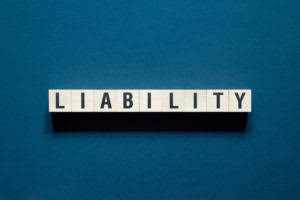
Contingent Liabilities And Their Presentation On The Balance Sheet
Content

He was a large shareholder of the bank, and the liability of the shareholders was unlimited. The executives explain to Bob that they manufactured and sold battery-operated bunny ears for kids to purchase and wear at the park. As the kids wore the bunny ears and the day got hotter, the bunny ears overheated and caught fire. As a result of several bunny ears catching fire, the executives were seriously thinking about recalling the bunny ears and giving everyone their money back. Show bioTammy teaches business courses at the post-secondary and secondary level and has a master’s of business administration in finance. …A jury awarded $5.2 million to a former employee of the Company for an alleged breach of contract and wrongful termination of employment. The Company has appealed the judgment on the basis of errors in the judge’s instructions to the jury and insufficiency of evidence to support the amount of the jury’s award.
If the firm manufactures 1,000 bicycle seats in a year and offers a warranty per seat, the firm needs to estimate the number of seats that may be returned under warranty each year. An estimated liability is certain to occur—so, an amount is always entered into the accounts even if the precise amount is not known at the time of data entry. Contingent liabilities are recorded to ensure that the financial statements are accurate and meet GAAP or IFRS requirements. If the liability is likely to occur and the amount can be reasonably estimated, the liability should be recorded in the accounting records of a firm.
The company’s legal department thinks that the rival firm has a strong case, and the business estimates a $2 million loss if the firm loses the case. Because the liability is both probable and easy to estimate, the firm posts an accounting entry on the balance sheet to debit legal expenses for $2 million and to credit accrued expense for $2 million. As resounded above, Bob told the executives if there’s a high probability the liability will occur, then it needs to be recorded and footnoted on the balance sheet to provide an accurate picture of their future liabilities. The accounting firm sent Bob to audit the financial statements of Ocean World Amusement Park. Bob starts by speaking with the executives and reviewing the balance sheet. In addition, it’s unclear what is meant by “expected” in relation to the amounts of contingent liabilities.
If you can only estimate a range of possible amounts, then record that amount in the range that appears to be a better estimate than any other amount; if no amount is better, then record the lowest amount in the range. You should also describe the liability in the footnotes that accompany the financial statements.
Contingent Liability Example
The recording of contingent liabilities prevents the understating of liabilities and expenses. When discussing your liabilities, it’s important to include not just what you owe, but also other obligations that have a possibility of occurring, known as contingent liabilities. Some examples of contingent liabilities include product recalls, pending lawsuits, and changes in legislation. A contingent liability may need to be recorded on the business’s financial statements, depending on the probability of the event occurring and the possibility of estimating the potential amount. Contingent liabilities reflect amounts that your business might owe if a specific “triggering” event happens in the future.

Accounting and reporting of contingent liabilities are regulated for public companies. Companies may also need to report them on private offerings of securities, too. There are three scenarios for contingent liabilities, all involving different accounting treatments. Even when a company and their legal team doesn’t know an exact amount, there is an estimate listed in the account because estimated liabilities are almost certain to happen.
Use Of Provisions
A contingent liability is defined as an obligation relating to a past transaction or event that may be payable in the future. It is a potential liability that may or may not become an actual liability (e.g., audit exception, pending litigation).
The offers that appear in this table are from partnerships from which Investopedia receives compensation. Peggy James is a CPA with over 9 years of experience in accounting and finance, including corporate, nonprofit, and personal finance environments. She most recently worked at Duke University and is the owner of Peggy James, CPA, PLLC, serving small businesses, nonprofits, solopreneurs, freelancers, and individuals.
Using Knowledge Of A Contingent Liability In Investing
Check out Google’s contingent liability considerations in this press release for Alphabet Inc.’s First Quarter 2017 Results to see a financial statement package, including note disclosures. Pending lawsuits and product warranties are common contingent liability examples because their outcomes are uncertain. The accounting rules for reporting a contingent liability differ depending on the estimated dollar amount of the liability and the likelihood of the event occurring.

The likelihood of loss is described as probable, reasonably possible, or remote. The ability to estimate a loss is described as known, reasonably estimable, or not reasonably estimable. According to FASB Statement No. 5, if the liability is probable and the amount can be reasonably estimated, companies should record contingent liabilities in the accounts. However, since most contingent liabilities may not occur and the amount often cannot be reasonably estimated, the accountant usually does not record them in the accounts. Instead, firms typically disclose these contingent liabilities in notes to their financial statements. Google, a subsidiary of Alphabet Inc., has expanded from a search engine to a global brand with a variety of product and service offerings. Like many other companies, contingent liabilities are carried on Google’s balance sheet, report expenses related to these contingencies on its income statement, and note disclosures are provided to explain its contingent liability treatments.
Incorporating Contingent Liabilities In A Financial Model
The SEC’s order in In the Matter of Healthcare Services Group, Inc. found that HSG improperly delayed recording or disclosing anticipated losses in pending litigation. The SEC noted that the case resulted from its EPS Initiative, in which the agency deploys data analytics to search for indicators of improper earnings management.
CIPHERLOC CORP MANAGEMENT’S DISCUSSION AND ANALYSIS OF FINANCIAL CONDITION AND RESULTS OF OPERATIONS (form 10-Q) – marketscreener.com
CIPHERLOC CORP MANAGEMENT’S DISCUSSION AND ANALYSIS OF FINANCIAL CONDITION AND RESULTS OF OPERATIONS (form 10-Q).
Posted: Mon, 14 Feb 2022 22:18:11 GMT [source]
If the amount fluctuates and it is possible to make a reasonable estimate, that amount should be updated in the financial statements accordingly. Don’t forget that the contingent liability remains on the balance sheet until your company pays it off. Record a contingent liability when it is probable that the loss will occur, and you can reasonably estimate the amount of the loss.
Chapter 8: Current Liabilities And Payroll
The user accepts the information as is and assumes all responsibility for the use of such information. Uniform Guidance requires that recipients of federal awards that pass-through funds to subrecipients determine if the results of subrecipient audits necessitate adjustment of the recipient’s own records. Contingencies may be positive as well as negative, but accounting practices only consider negative outcomes. Harold Averkamp has worked as a university accounting instructor, accountant, and consultant for more than 25 years. The Structured Query Language comprises several different data types that allow it to store different types of information… Free Financial Modeling Guide A Complete Guide to Financial Modeling This resource is designed to be the best free guide to financial modeling! A liability is something a person or company owes, usually a sum of money.

And if they are realized, their impact can be problematic for a buyer, shareholder or divorcing spouse, unless they are disclosed. • Liquidated damages – If the company is party to a contract that includes a liquidated damages clause, it may owe an assessment in case of a contractual breach. Sophisticated analyses include techniques like options pricing methodology, expected loss estimation, and risk simulations of the impacts of changed macroeconomic conditions.
Example of contingent liabilities includes potential pending lawsuits from the company, warranties given, etc. Bob tells the executives that these situations are considered contingent liabilities. Based on their probabilities of occurring, they may need to be estimated and added to the financial statements.
- The Company has appealed the judgment on the basis of errors in the judge’s instructions to the jury and insufficiency of evidence to support the amount of the jury’s award.
- Blowout Preventer’s lawyers have determined that it is probable that they will lose the case and have to pay the sum amount.
- A contingent liability is an issue or concern that may take place as an outcome of a certain event such as a lawsuit, warranties or recalls.
- Positive contingencies do not require or allow the same types of adjustments to the company’s financial statements as do negative contingencies, since accounting standards do not permit positive contingencies to be recorded.
- Contingent liabilities can be a tricky concept for a company’s management, as well as for investors.
If the company has a strong cash flow and its earnings are high, the liability may not be as important. Whose existence will be confirmed only by the occurrence or non-occurrence of one or more uncertain future events not wholly within the control of the entity. The company agrees to guarantee that the supplier’s bank loan will be repaid. As a result of the company’s guarantee, the bank makes the loan to the supplier. If the supplier makes the loan payments needed to pay off the loan, the company will have no liability. If the supplier fails to repay the bank, the company will have an actual liability. According to the full disclosure principle, all significant, relevant facts related to the financial performance and fundamentals of a company should be disclosed in the financial statements.
The executives explained to Bob that the amusement park was being sued by some of the parents whose kids’ hair got singed by the bunny ears catching on fire. In his conversation with the executives, they told Bob there may be a product recall on rabbit ears they manufactured this year.
Contingent liabilities do crystallize 😨 https://t.co/22G5lTVmdl
— David Ndii (@DavidNdii) December 24, 2021
Recently one of its products “malfunctioned” causing a massive explosion on a rig owned and operated by one of its primary customers Big Chief Inc. Big Chief has sued Blowout for the total sum of the rig as well as each worker’s salary. Blowout Preventer’s lawyers have determined that it is probable that they will lose the case and have to pay the sum amount.


